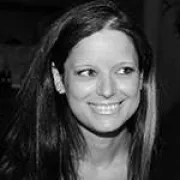Ever since its invention back in the 18th century, photography has been documenting life. At the same time, it focuses on inviting audiences to a rather subjective world, while trying to be taken seriously as an art form. Photography has always been considered a male-dominated profession, but luckily things are changing. Scholars, writers, bloggers, photography students and enthusiasts have been giving due to the female pioneers of the field. Most of them were always standing and/or hiding in the shadows, oblivious to how much they could acclaim and accomplish. Arguably, the technique, concepts and thematic female photographers use differ from those of a male photographer. At a time when most women were convinced that their place was in the kitchen and certainly not in the darkroom, there were those who were struggling to surpass their male counterparts and work towards gaining respect and recognition for their work.

Berry Berenson (American photographer, 1948-2001) was an accomplished Hollywood film actress, model and fashion photographer. Being the granddaughter of prominent fashion figure Elsa Schiaperelli, Berry had a lot to prove. Born in Manhattan, but educated mostly in Europe, she followed a model career in the late 1960s before becoming a freelance photographer in 1973. Her work had been published in Life, Glamour, Vogue, Harper's Bazaar and Newsweek. Berenson studied acting in New York along with Richard Gere, Penelope Milford and others. She appeared in several motion pictures and starred opposite Anthony Perkins in the 1978 film Remember My Name. She was married to the American actor and director, from 1973 until his death in 1992. Berenson's ambivalent career was partly a product of her aristocratic antecedents and connections. Through her better-known sister, actress Marisa Berenson, she came to photograph a roll-call of Hollywood stars: Pilar Crespi, Candice Bergen and more. Berry wasn't fond of straying too far outside the conventions of the medium of photography and she enjoyed setting up her models and having fun while working. In between shooting covers for Life magazine, she was shooting films. Berenson had also worked in Andy Warhol's magazine Interview, as a photographer. Her black and white fashion photos, including outdoor modeling and models, were outclassing, elegant and sophisticated. She photographed in long shots, as well as close-ups. Berry Berenson was a passenger on the hijacked American Airlines flight 11 which crashed into the World Trade Centre on 9/11. At the time of her death, she was returning home to Los Angeles, after holidaying on Cape Cod. She was 53.

Zahra Kazemi (Iranian-Canadian photographer, 1948-2003) was born in Iran and moved to France to study literature and cinema. She later immigrated to Canada, with her son, and gained dual citizenship as an Iranian and Canadian national. She worked as a photojournalist in Africa, Latin America and various Middle-Eastern countries - including the Palestinian territories, Iraq and Afghanistan. Recurrent themes in her work were the documentation of poverty, destitution, forced exile and oppression, and also the strength of women in these situations. Kazemi used her Iranian passport to visit her birth country in July 2003, with the intention of documenting the possible demonstrations that were expected to take place in Tehran. The demonstrations did in fact take place and were effectively interrupted by security forces and paramilitary vigilantes. After the arrest of 4000 students that were taken to a political prisoner detention facility, Kazemi went there to take pictures of the students' family members. It seems that the government-issued press card that allowed her to work in and around Tehran, was not good enough. When a prison staff member witnessed Kazemi taking pictures, he demanded that she give him her camera. Kazemi was willing to give up her camera, but not the film that was already inside. Humiliated by his inability to force a woman into giving up her camera, the official began to beat Kazemi on the head, sending her flying backward. Her skull connected with the hard surface that broke her fall. She was detained at the spot and interrogated for the next three days. A few days after her arrest, newspapers ran stories of her arrest calling her "a spy who had entered the country undercover as a journalist". Zahra insisted that she didn't photograph any part of the prison, only the street and the demonstrators. Nineteen days after her arrest, the freelance photojournalist died in Iranian custody, in a military hospital. According to the medical examiner, she was raped, tortured and killed. She was 55 years old when she was beaten into a coma by Iranian interrogators. For over a decade, Kazemi's son Stephan has devoted his life to raising awareness about his mother's story. In 2006, he filed a civil lawsuit seeking damages for her death. The Iranian government argued it is immune from prosecution in Canadian courts, but the case went to the Supreme Court of Canada in December 2013. Stephan is still waiting for the final decision, while Zahra Kazemi's killers have gone unpunished. Zahra is a symbol of all the human rights violations perpetrated in Iran since the clerics seized power in 1979. She was a woman and a journalist who wanted to tell the world about the terrible conditions in Tehran's Evin prison, a symbol of the regime's relentless repression.

"Photography was her passion. I want people to see what she was doing and how she used pictures to tell stories." - Stephan Kazemi on his mother Zahra Kazemi (1948-2013)
We will continue talking about female names that left their mark in photography and about contemporary female photographers who are still to emerge. There are a lot of female photographers out there deserving of praise and we can only hope to cover as many of them as we can. Please, follow this space to find out more.







